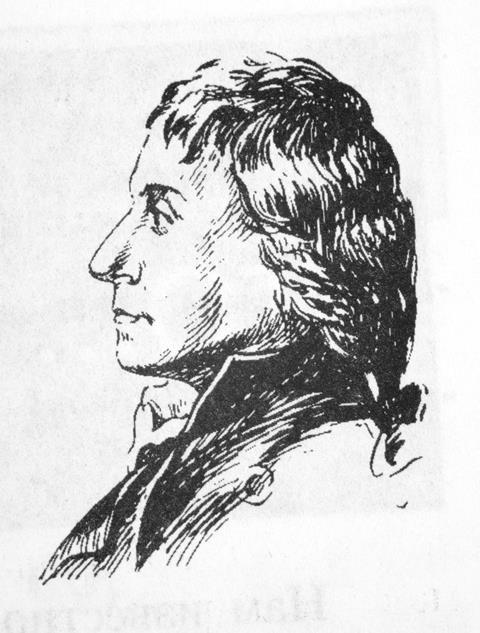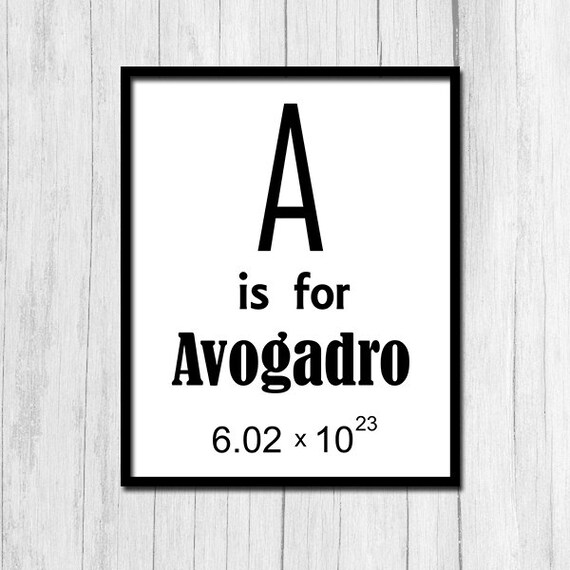Avogadro Scientist
ITALIAN CHEMIST
1776–1856
In 1811, just three years after John Dalton published his atomic theory , a brilliant theoretician named Amedeo Avogadro proposed his molecular theory. Avogadro's molecular theory related gas densities to molecular weights, explained reacting proportions by volume in terms of molecular ratios and compositions, and suggested methods for determining both molecular weights and compositions. His 1811 publication was a tour de force. Nonetheless, it was ignored for over half a century. Historians have sought reasons for the neglect of Avogadro's work in his life, his theory, and the state of chemistry at the time.
Avogadro's Life
Avogadro is an advanced molecule editor and visualizer designed for cross-platform use in computational chemistry, molecular modeling, bioinformatics, materials science, and related areas. It offers flexible high quality rendering and a powerful plugin architecture. Amadeo Avogadro was an Italian scientist noted to be one of the founders of physical chemistry. He was actually a physics professor but he experimented in both physics and chemistry using mathematics to base most of his findings. Avogadro is well known for his hypothesis known as Avogadro's Law.
Amedeo Avagadro was born in 1776 in Turin, a city in northwestern Italy. Avogadro spent his entire life within 80 kilometers (50 miles) of Turin, far from the cultural centers where chemistry was becoming a science. He received a classical education in the humanities, earned a doctorate in law in 1796 at the age of twenty, and practiced law for the next ten years. After auditing some courses and studying science on his own, Avogadro made a radical career change. In 1806 he became a secondary school science teacher, and in 1820 a university physics professor. He married in 1815, had seven children, and by all accounts, led a very happy family life.
During his academic career, Avogadro's publications revealed an intense curiosity, sharp intuition, vivid imagination, rigorous logic, and independent judgment—traits of an outstanding scientist. Street posting box office. His obituary in an Italian scientific journal remarked on his retiring disposition and on the simplicity of his life, and it noted his other researches, but it did not mention the 1811 paper on his molecular theory.
Avogadro's Molecular Theory
Avogadro made two assumptions about molecules in his 1811 publication. The first assumption is now known as Avogadro's hypothesis, sometimes also called the EVEN hypothesis. It stated that equal volumes of gases contain equal numbers (thus, even) of molecules at the same temperature and pressure. The hypothesis was based on a model of the gas state in which molecules are far apart and equally spaced so that each molecule occupies the same volume. The second assumption was that gas molecules can divide during chemical reactions.
Avogadro used the EVEN hypothesis to interpret gas densities and assign molecular weights. EVEN implies that the density of a gas at a given temperature and pressure depends only on the weight of its molecules. Avogadro supposed that since the reported gas density of oxygen was 15 times that of hydrogen, the molecular weight of oxygen was 15 times that of hydrogen (the modern calculation of the ratio of the densities and molecular weights is actually sixteen). Consequently, he assigned oxygen a molecular weight of 15, relative to 1 for hydrogen. By this method Avogadro could determine a molecular weight for any gas, given its density.
Avogadro needed both assumptions to explain reacting proportions and molecular compositions. For example, when water forms, the reacting proportions of hydrogen, oxygen, and water are 2:1:2 by volume. On the basis of the EVEN hypothesis, a 2:1:2 volumetric ratio should correspond to a 2:1:2 molecular ratio. Thus, two molecules of hydrogen (h) should combine with one molecule of oxygen (o) to give two molecules of water. Direct combination, however, would give only one molecule of h 2 o. To fit the volumetric data, Avogadro split the h 2 o water molecule into two ho 1/2 molecules. This in turn forced him to assume that oxygen molecules could divide into two 'half molecules' during the reaction: 2h + o → [h 2 o] → 2ho 1/2 . He expressed the composition of water as one 'half molecule' of oxygen combined with one molecule of hydrogen (ho 1/2 ). With the aid of his two assumptions—EVEN and divisible molecules—Avogadro determined compositions for water, ammonia, hydrogen chloride, and gaseous oxides of nitrogen, carbon, and sulfur.
Avogadro Science Olympiad
Early Nineteenth-Century Chemistry

The state of chemical theory and practice in 1811 was primitive by modern standards and not yet ready for Avogadro's molecular theory. Dalton's model of the gas state (atoms of different size in contact) precluded EVEN. Jöns Jakob Berzelius, another very influential chemist, believed gaseous elements like oxygen contained only indivisible atoms, not divisible molecules. Gas density and combining ratios data were limited and inaccurate. Atomic weights depended on unknown formulas and vice versa—a vicious cycle.
Conclusion
In retrospect the neglect of Avogadro's theory seems quite understandable. In 1811 he was a secondary school teacher living in a remote province. Furthermore, he was a theoretical physicist writing for practical chemists in legal language. His molecular theory was based on speculative assumptions, lacked independent experimental evidence or theoretical justification, and could only explain but not predict volumetric ratios. His molecular ratios (2h + o → 2ho 1/2 ) were far removed from modern atomic ratios (2H 2 + O 2 → 2H 2 O) and did not solve the atomic weight –formula problem. Chemists in the early nineteenth century, however, needed more immediately productive theories and much more experimental information before Avogadro's theory could be truly useful. It took half a century of effort, the development of organic chemistry, and the ingenuity of another Italian, Stanislao Cannizzaro, to build a modern chemistry on the foundations laid by Avogadro. Nonetheless, as Nobel Prize winner Linus Pauling observed in a 1956 article in Science , Avogadro's work 'forms the basis of the whole of theoretical chemistry' and is 'one of the greatest contributions to chemistry that has ever been made.'
SEE ALSO Berzelius, JÖns Jakob ; Cannizzaro, Stanislao ; Dalton, John ; Pauling, Linus .

John D. Hostettler Osx mojave virtualbox.

Famous Scientist Avogadro
Bibliography

Causey, Robert L. (1971). 'Avogadro's Hypothesis and the Duhemian Pitfall.' Journal of Chemical Education 48(6):365–367.
Ihde, Aaron (1964). The Development of Modern Chemistry. New York: Harper & Row.
Lipeles, Enid S. (1983). 'The Chemical Contributions of Amedeo Avogadro.' Journal of Chemical Education 60(2):127–128.
Nash, Leonard K. (1957). 'The Atomic-Molecular Theory.' In Harvard Case Histories in Experimental Science , Vol. 1, ed. James Bryant Conant. Cambridge, MA: Harvard University Press.
Avogadro Scientist
Pauling, Linus (1956). 'Amedeo Avogadro.' Science 124:708–713.
